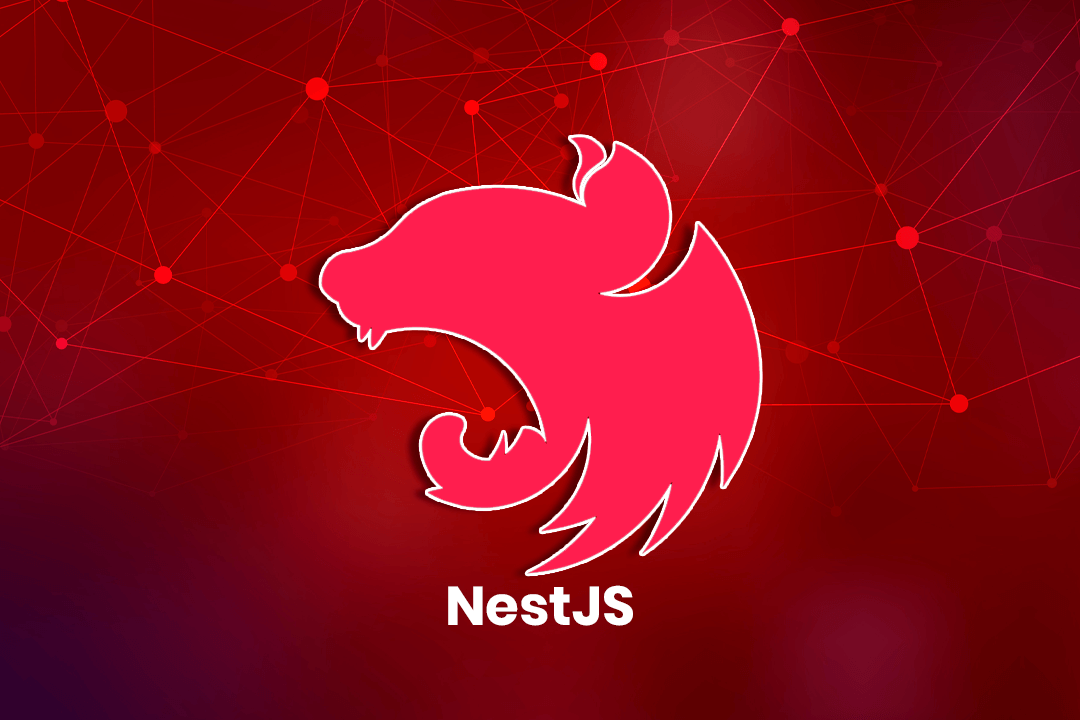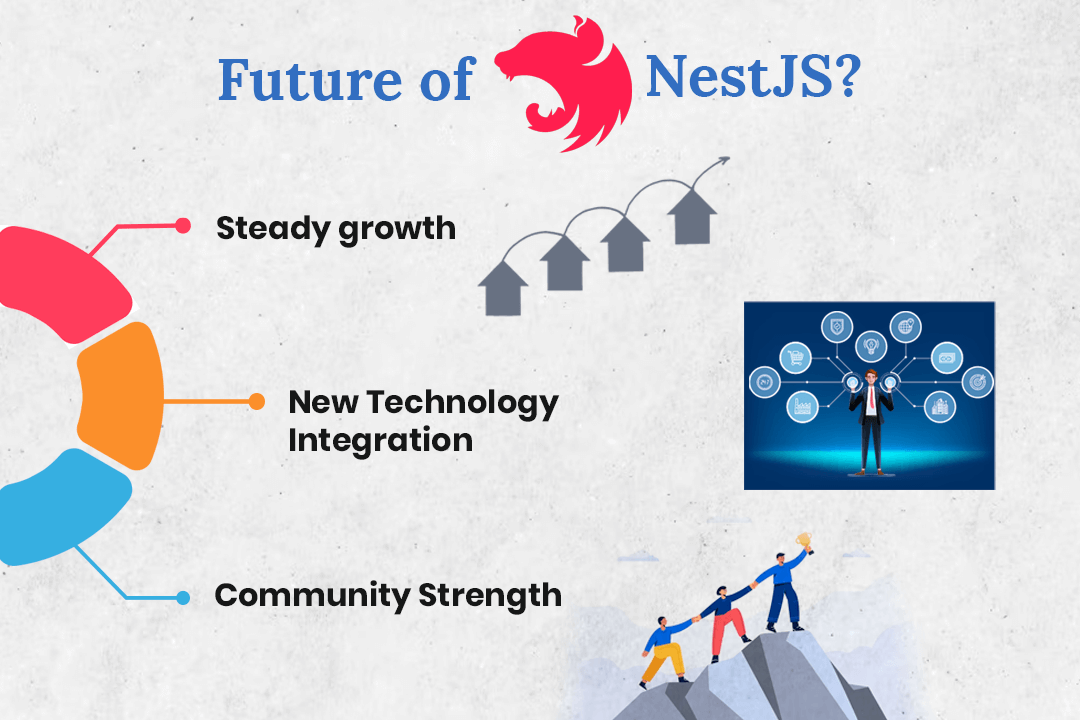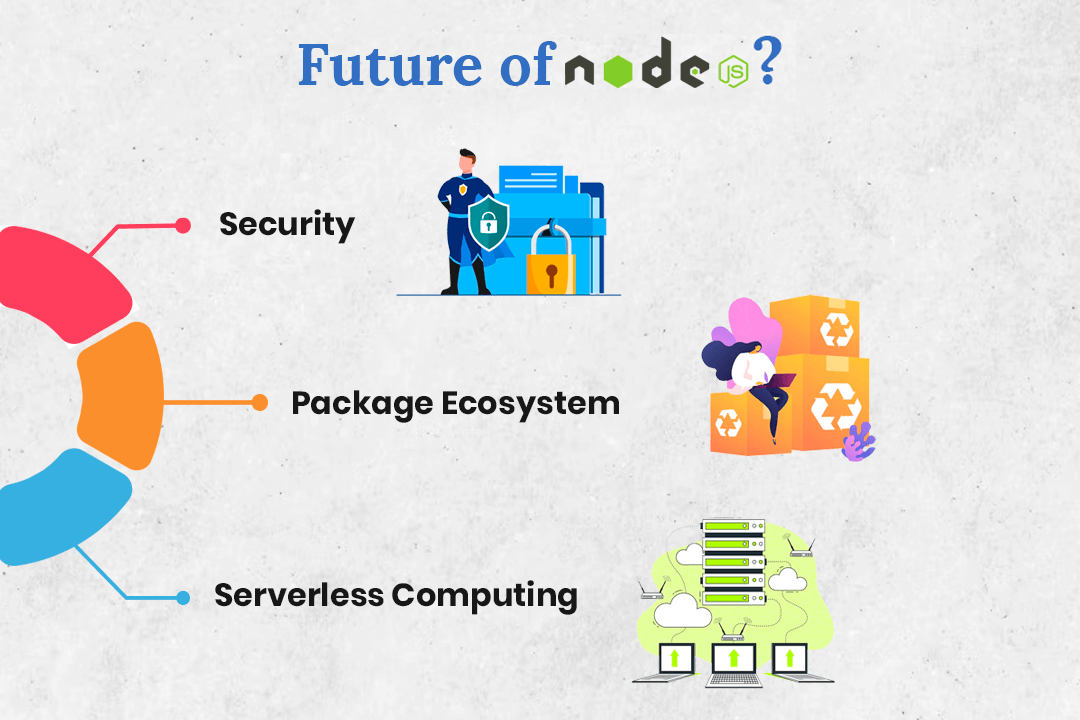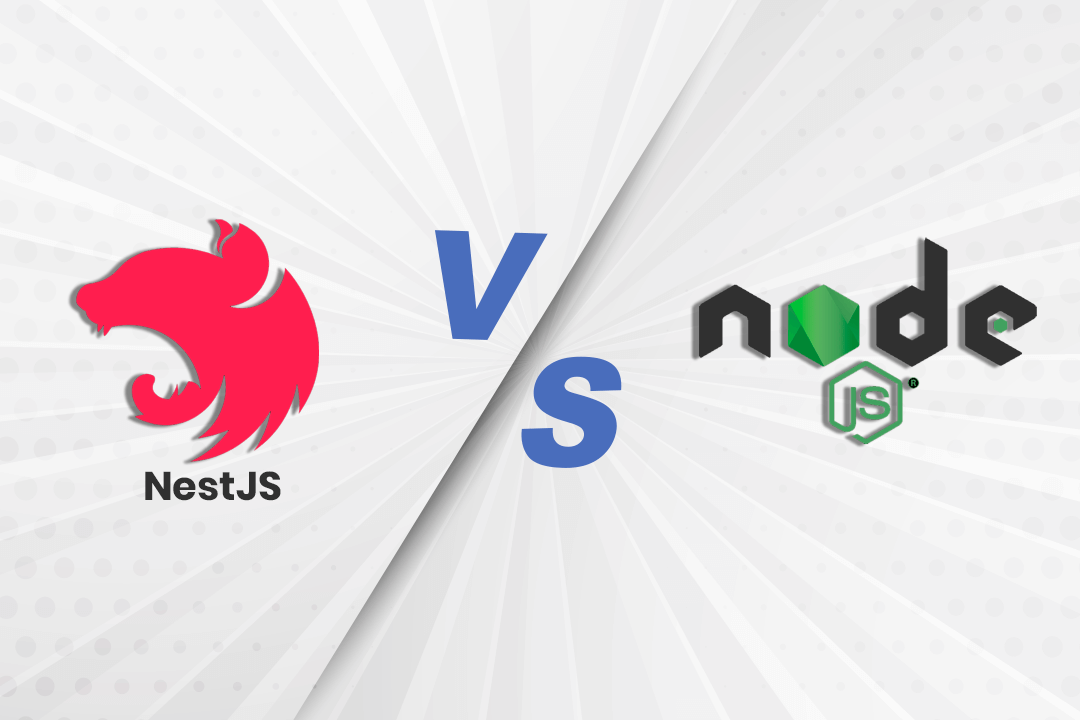NestJS vs. Node.js: Are you having a hard time choosing between any of them? Well, If you want to develop server-side applications using JavaScript, NestJS or Node.js will be perfect solutions. However, both tackle different problems in their own way. Speaking of which, choosing becomes a tricky part here.
In this blog, we’ll go over the pros, cons, use cases, similarities, popularity, and adoptions of each. So, keep reading, and in the end, you’ll have an idea of the best one between them for your next project.
Between NestJS and Node.js, let’s start learning about NestJS first. We’ll also go over the expectations we can have from its future version.
What is NestJS?

In 2017, Kamil Mysliwiec, a software developer, launched the NestJS open-source framework. It comes in the form of a toolbox that provides a structure to write minimum and clean code. For that, developers use programming languages like JavaScript or TypeScript to develop web apps and APIs. NestJS is time-saving and cost-effective. It’s efficient enough to streamline the application development process.
Pros of NestJS
Organized codes
Scalability
Built-in-support
Testing
Documentation
Cons of NestJS
Learning curve
Size
Performance overhead
Less mature
Opinionated
Use cases for NestJS
Large-scale applications
API development
GraphQL
Dependency injection
Real-time applications
Popularity of NestJS
Adoption of NestJS
Popularity of NestJS
What is the future of NestJS?

The fan base of NestJS is growing massively. In 2023, it gained over 59,899 stars on GitHub. The future of NestJS seems promising. Without a doubt, it’s going to evolve continuously.
Here are a few things we can expect from its future version:
Steady growth
New technology integration
Community strength
As the users become more active and prominent, getting documents, tutorials, and support will be easy. More online resources will be available to help you with NestJS projects. You will be able to keep up with accurate knowledge as it progresses.
Between NestJS and Node.js, NestJS has a long way to go. Now, let’s see what Node.js has to offer in the web development process and what future it holds.
What is Node.js?

Pros of Node.js
Speed
Cross-platform
Open source
Easily customizable
Great for real-time apps
Cons of Node.js
Single-threaded
Callback issues
Immature for some use cases
Longer boot-time
Lack of strong typing
Use cases for Node.js
Web servers
Single page applications
High-performance applications
Serverless applications
Proxy servers
Popularity of Node.js
Adoption of Node.js
What is the future of Node.js?

Node.js will still be a relevant framework in the future. Recent statistics show that Node.js has become the most used web framework. The survey indicates that approximately 42.7% of respondents use Node.js. In modern times of this industry, working with multiple connections is essential. Node.js offers a non-blocking architecture and is asynchronous to handle those large numbers of connections.
Here are a few things that we can expect from its future version:
Security
Package ecosystem
Serverless computing
Node.js is lightweight, and the startup time is also fast. The serverless computing nature of it makes it continue to grow more. Therefore, it will remain the developers’ choice to build server-side applications.
Now, you’ve got the differences between NestJS and Node.js. So, Let’s move on to know how similar they are.
Common traits between NestJS and Node.js
Even if they are built to solve different issues, both have many things in common. After all, the NestJS framework is created over Node.js. Some of the similarities we can discuss here.
JavaScript and TypeScript
Event-driven
Non-blocking I/O
Npm (Node package manager)
Server-side
NestJS VS Node.js: which one is the best? (Conclusion)

Both have different purposes to serve in the web development process.
Node.js is a runtime environment. You can use it to run JavaScript on the server. Plus, it’s useful for different types of projects. Simply because it can handle both simple and complex scripts, many frameworks can be used on Node.js for web application development purposes, including Nest JS. One of the popular frameworks is Express.js.
On the other side, NestJS is a framework developed on the Node.js runtime environment. The purpose of designing this is to maintain and structure the code. This helps in building server-side and web applications APIs. It comes with more features like dependency injection, modules, and so on to develop robust applications.
Now, the question is which one to choose between NestJS and Node.js? Well, that depends on your project size and needs. Node.js is a perfect choice when you need a simple and lightweight solution. And if you have a larger project that needs to be maintained thoroughly, then NestJS is an excellent choice. It also helps you and your team to command over writing structured code while working on complex projects.
Have you got more questions in mind? Don’t hesitate to reach out to us. Go to our Contact Us page and get connected. We would love to answer all the questions you have in mind.
FAQ
The answer is blockchain, as the concept of blockchain originated first in 2008 in a whitepaper to serve the digital currency Bitcoin. Later, in January 2009, a new kind of digital currency, Bitcoin, was launched. Other cryptocurrencies also started developing to support blockchain technology.
Bitcoin blockchain is the longest-running blockchain as it is the widely accepted starting point and origin of the blockchain system.
Yes, we can credit Bitcoin for introducing the practical concept of blockchain technology. Satoshi Nakamoto published a whitepaper in 2008. The paper was named “Bitcoin: A Peer-to-Peer Electronic Cash System.” And the paper says that Bitcoin, a digital currency, will be operated on a decentralized network.
Leave a Reply